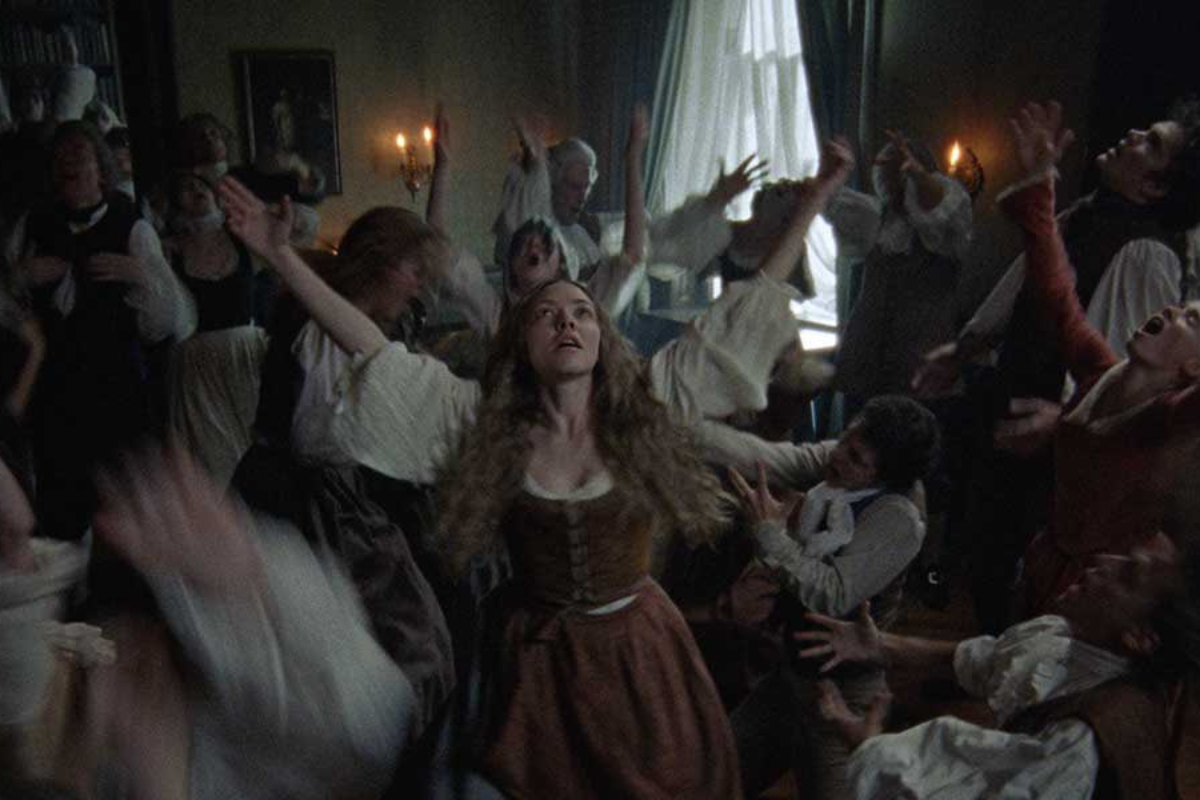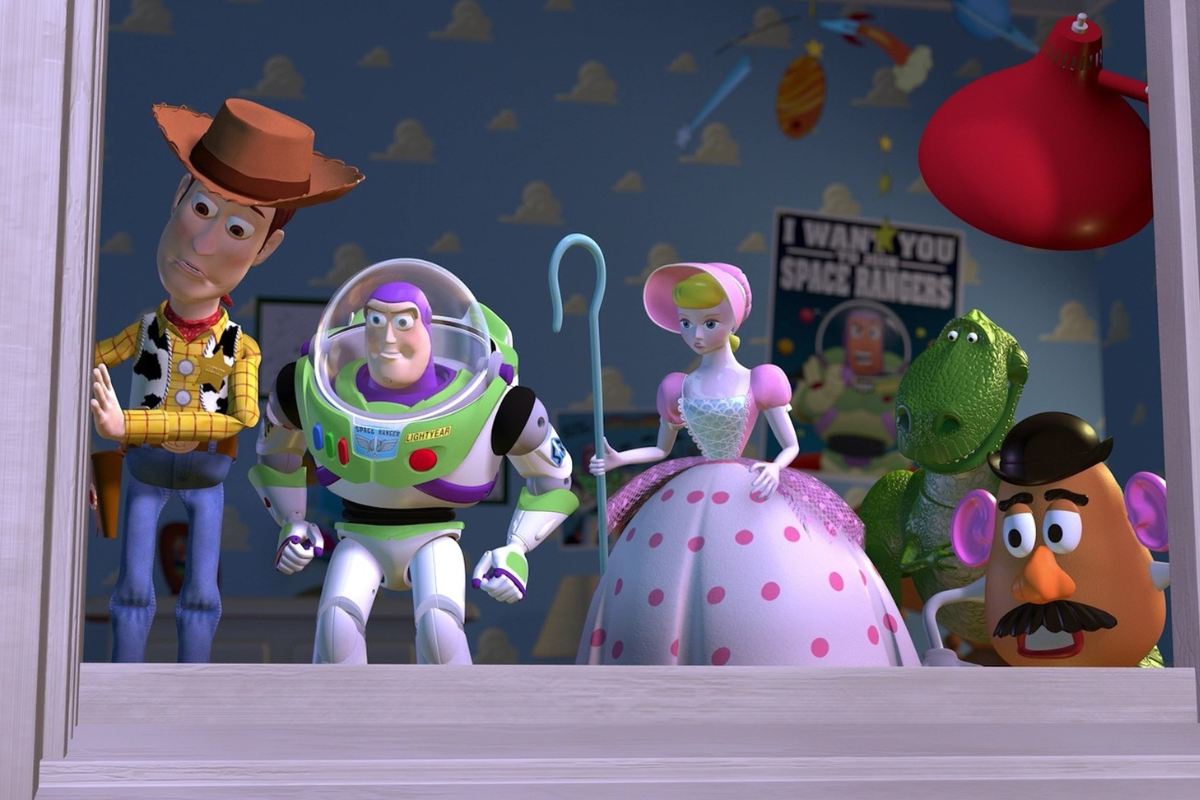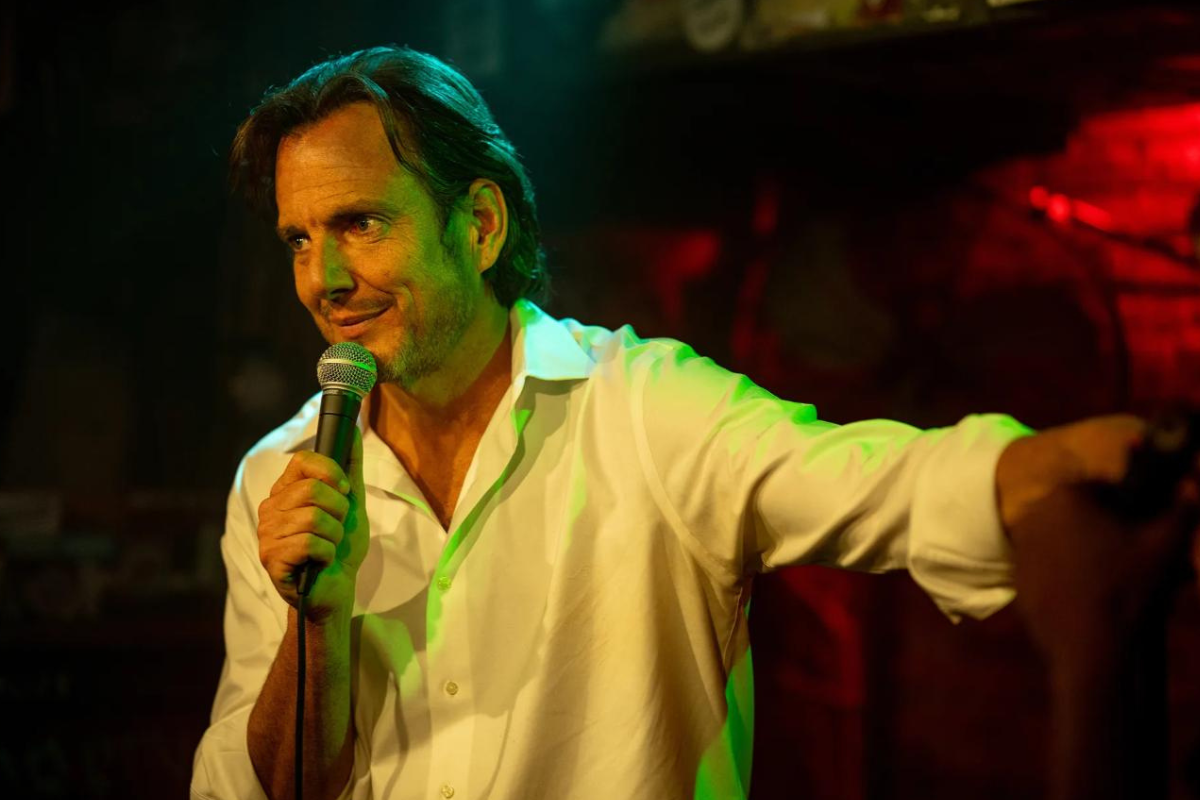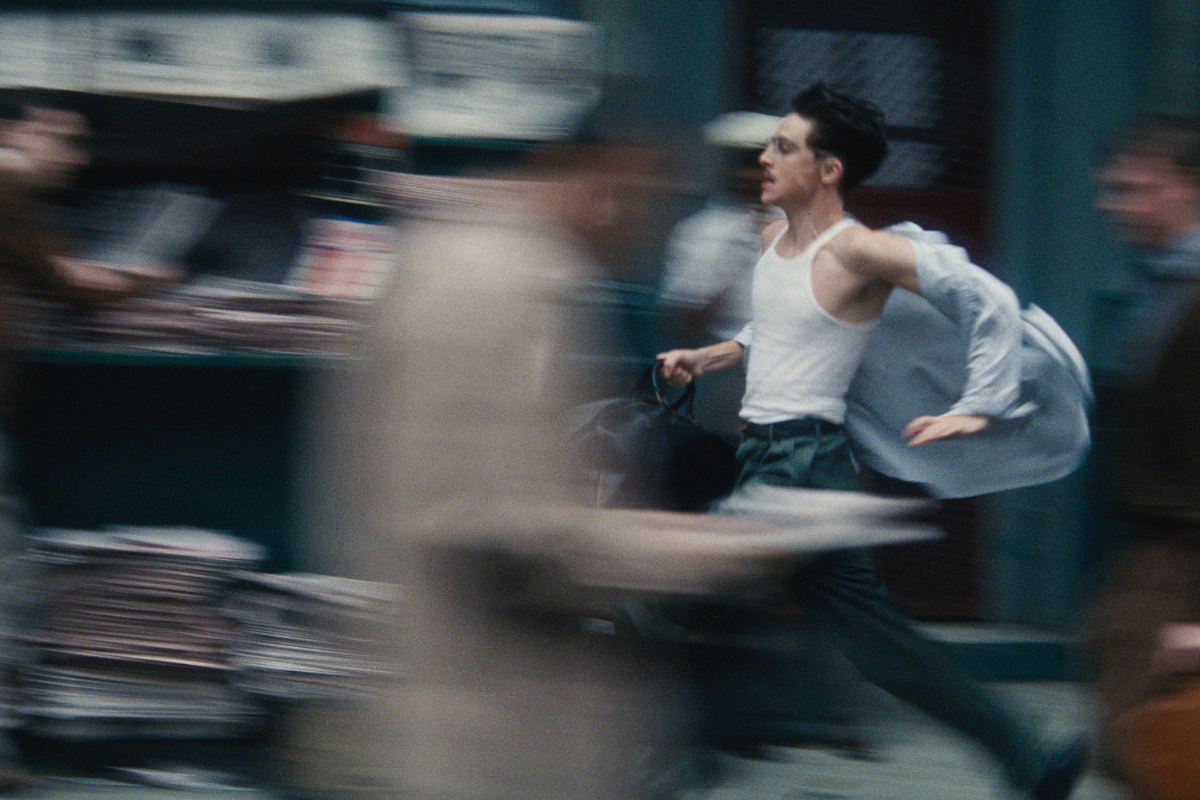UNDERSTANDING SCREENWRITING: Smart People, Smart Movies
In Understanding Screenwriting, Tom Stempel explores Booksmart, Non-Fiction, The Cool Kids, Whiskey Cavalier, Blood & Treasure, and shares a look back at the life of Alvin Sargent.
Tom Stempel explores Booksmart, Non-Fiction, The Cool Kids, Whiskey Cavalier, Blood & Treasure, and shares a look back at the life of Alvin Sargent.
A Great Rewrite.
Booksmart (2019. Written by Susanna Fogel, Emily Halpern, Sarah Haskins, Katie Silberman. 102 minutes)
In 2013, I reviewed a movie called The To-Do List; you can read the review here. As you can see, I did not like it much. That movie was about a high-school girl named Brandy, an academic over-achiever, who decides that, not having had a social life in high school, she is going to make up for it by losing her virginity before college. So she makes up a to-do list and does the stuff on the list, one damned thing after another. There is no suspense or buildup. Brandy is played by the comically gifted Aubrey Plaza, but the writer, Maggie Carey, does not give her anything to do but tell jokes. There is virtually no characterization for Brandy and none at all for her friend Fiona. Read my review to see the mediocre comedy line Carey gives Fiona.
So, why am I spending so much time on that mediocre movie in this review? Simple. The plot of Booksmart is similar to that of The To-Do List, but the writers here do everything right that Carey did wrong.
First of all, they give us two girls, Amy and Molly. Unlike the friend in To-Do, both of these girls are full-blown characters, and we get the chemistry between them. Sometimes they get to talking to each other so fast we cannot keep up, especially with some of the teenage slang. The director is Olivia Wilde, an actress directing her first feature, and boy has she been paying attention on the sets she’s been on. She knows how fast she can let the actresses go: about His Girl Friday (1940) speed. I want to see the film again sometime to see how much I missed the first time.
The writers do not just suddenly make Amy and Molly decide to have a wild night. They have been looking down on their classmates who party a lot, but are taken up short when they learn those classmates have gotten into major colleges just like they have. So, Amy and Molly decide to go to the one end-of-school party that all cool kids are going to do. There is no list, so we are not ticking off items. The one true party is their goal. But they don’t know where it is. They end up at a few other parties before they hit the “right” one. But that party does not give them what they had hoped. That’s part of the structure the writers provide here that Carey did not in To-Do: there are constant reversals and twists, so we have to run to keep up. So wear your running shoes when you see it.
The World We Live in Now, Even if it is in France.
Non-Fiction (2018. Written by Oliver Assayas. 108 minutes)
The poster advertising this movie makes it seem like a French sex farce: a drawing of a lot of the cast lying around on a bed. Well, yes, it does have a lot of affairs going on in the film, more of which later. But the more interesting elements tell us about the world we live in now.
My favorite Assayas film is his 2008 Summer Hours, which I reviewed here. On the surface it is a family drama about what the middle-aged children are going to do with the family estate when the matriarch dies. But Assayas also makes it a look at France, French culture, and globalization.
In his new film, the texts as well as the subtexts are about the media and how digitalization is changing everything. In the first scene, Léonard, an author, has a meeting with his editor Alain in the latter’s office. They are talking about, among many other things, how books publishers are trying to figure out to how to market their books to millennials, who mostly read stuff on their phones. The discussion was almost exactly like the one I had the day before I saw it with Joni Varner, a former colleague of mine who still teaches at LACC. She was talking about how the faculty is trying to figure out how to teach to millennials. Assayas obviously has been paying attention to the world, as he did in Summer Hours.
And in the next scene Alain and Léonard go to lunch and Alain tries to let Leonard know he is not going to publish Léonard’s newest book. He finally has to tell him outright when they go back to the office. Well, any of us who write have had to deal with having a horse shot out from under us like that.
We meet Alain’s wife Selena, a television actress who plays a police officer (although Selena gets upset if you call her that) in a TV series. We meet Leonard’s wife Valérie, who is working with a politician she admires more than their friends do. These people, being French, are having affairs. Alain is having one with Laure, a young woman he has hired to help the company work in the digital age. Léonard is having an affair with, well, I am not going to tell you, since Assayas does not let us know until almost half-way through the film. The discovery comes at the right point in the film to develop the plots.
In the final 15 minutes or so, we join Léonard and Valérie as they visit Alain and Selena at the latter’s beach house in Majorca, Spain. Not only is the light sunnier, but the tone of the scenes lighter. You should study this scene to see how Assayas ties a lot of the details together (listen to how Selena now refers to her role on television, then stick around the great meta-joke throwaway about one of the actors).
If you want to write an adult film about the world in which live, this is one to study to see how it should be done.
Cool and Cavalier, We Hardly Knew Ye.
The Cool Kids (2018-19. Created by Charlie Day and Paul Fruchbom. Various writers. 30 minute episodes) and Whiskey Cavalier (2019. Created by David Hemingson. Various writers. 60 minute episodes).
The Cool Kids premiered last fall and Whiskey Cavalier in February. Both were cancelled in May, which is too bad, since they were both very entertaining shows.
Maybe I should have written about them sooner.
The Cool Kids is a half-hour sitcom set in a retirement home, sort of a TV series version of Ron Shelton’s 2017 film Just Getting Started, only funnier. The four main characters are Hank (David Allen Grier), a grumpy old man who usually gets everything wrong, Charlie (Martin Mull), who seems still stoned from all that weed he had in the sixties, Sid (Leslie Jordan), the gay one, and the latest addition to the group, Margaret (Vicki Lawrence), whom the guys only reluctantly allow to sit at “their” table.
There are not as many “old” people jokes as you might imagine, which is why it may not have attracted a younger audience of the age range advertisers think they are supposed to love (even though older people often have more spendable income than younger ones). It is more character comedy, although with its share of gags.
I was particularly impressed with Leslie Jordan, one of our great character actors. While Grier tends to over act and Mull under acts (very well, in fact), Jordan hits exactly the right tone: gay, but not a flaming queen. The writers and Jordan make Sid funny, and while they do not avoid stereotypes, they use them as jokes acknowledging them as stereotypes rather than as something homophobes assume are the truth.
The cast is also filled with other older actors we have loved for a long time. In the final episode of the series, Vicki Lawrence’s Margaret has occasion to dress in drag as Sid, recalling her work with Carol Burnett. That in turn is topped by one of the recurring characters, Dudley, dressed in drag as Margaret. It’s funny by itself, and a great meta joke, since Dudley is played by Jamie Farr, well-remembered as Klinger in M*A*S*H. In case none of you are old enough to remember, Klinger was simply going to be a one-off joke in a dress in the pilot of M*A*S*H, but the creators made him a recurring character.
Whiskey Cavalier was a likeable action-adventure show about a group of FBI and CIA agents put together to hunt down crooks, spies, and the like. Part of the entertainment value was that it was filmed all over Europe and elsewhere. The chemistry between the actors was good, and they were fun to spend time with. Obviously not enough fun for enough people to watch.
Shortly after Whiskey Cavalier, an ABC show, was cancelled, CBS premiered a similar show called Blood & Treasure, also shot all over Europe. In this show, the focus was more on the two leads, Danny, an antiquities expert, who teams up with Lexi, an art thief he once had an intense romance with (the two leads in Whiskey Cavavlier, at least in the episodes that were shown, did not really like each other). Danny and Lexi spend the first several episodes chasing down the mummy of Cleopatra. This involves a lot of flashbacks of the Nazis during the war moving large crates around. If Whiskey was inspired by the Bond films, Blood owes more than a little to the Indiana Jones movies, especially Raiders of the Lost Ark (1981). We’ll see if it catches on more than Whiskey did.
Alvin Sargent (1927-2019): An Appreciation
Alvin Sargent, who died on May 9th, had the kind of career every screenwriter dreams about, or at least should.
Sargent got into the Navy at the very end of World War II. He had to learn Morse Code, and to do that he had to learn typing. He was not as crazy about Morse Code as he was about typing. He told Pat McGilligan (in McGilligan’s interview with him in McGilligan’s Backstory 4: Interviews with Screenwriters of the 1970s and the 1980s), “I loved it! I loved typing! Typing can be a warm-up for writing. Once you get going, whatever you’re thinking about subconsciously taps into your typing, and vice-versa.”
After the Navy, Sargent went to Los Angeles and acted in little theatre productions. He worked for Variety for years selling ads, but also started writing for television. In 1966 his first produced screenplay Gambit was released. It was a lively, complex heist film, infinitely better than the 2012 unofficial remake.
Sargent then wrote a group of small, sensitive dramas, including The Sterile Cuckoo (1960) and Love and Pain and the Whole Damn Thing (1972). He got his first Oscar nomination for his 1973 film Paper Moon. It was based on a novel, but as often with his adaptations, he never read all the way through the novel: “I truly didn’t read the last part of it. I just couldn’t read that book any more. I got bored.”
His first Oscar came for the 1977 film Julia, which he adapted, more closely than some of his other scripts, from Lillian Hellman supposedly true story about an anti-Nazi friend of hers. He stuck with Hellman’s chronological jumping around, and Fred Zinnemann, the director, and Walter Murch, the editor, followed the editing pattern Sargent suggested in the script. Sargent and Zinnemann both came to realize as they worked on the film that Hellman’s story was not as truthful as she claimed and you can get hints throughout the film that they are accepting the story only as Hellman’s memory and not as “the truth.”
Several critics complained that there is not enough of Julia in the film, since she is the most interesting character in the story. Part of the reason Sargent did not have more of her is that he had trouble confirming what Hellman was saying. He was also interested in exploring the relationship between Hellman and author Dashiell Hammett. For a more detailed look at Sargent’s involvement, read J.E. Smyth’s book Fred Zinnemann and the Cinema of Resistance. You can read my review of that book here.
Sargent’s next Oscar came for the 1980 film Ordinary People. Again, he had trouble reading the book: “I even had trouble reading Ordinary People, and that’s an easy book to read. Somehow I always lose track of what’s going on.” Robert Redford, the director, asked Sargent why he did not include a certain scene from the book. The scene did not ring a bell for Sargent, so he told Redford he’d think about it. Sargent went home, got out the book, found the scene and thought it was a good scene. He put it in the script.
In his later years, Sargent was married to producer Laura Ziskin, which explains why the Oscar-winning screenwriter of Julia and Ordinary People ended up working on the scripts for Ziskin’s productions of Spider-Man 2 (2004), Spider-Man 3 (2004), and The Amazing Spider-Man (2012). Hollywood is indeed a town of relationships, but here nepotism worked: Sargent added a little humanity into superhero movies.
Learn more about screenwriting at the Writer's Digest Annual Conference, now offering a screenwriting track!
REGISTER NOW!
Tom Stempel is a Professor Emeritus at Los Angeles City College, where he taught film history and screenwriting from 1971 to 2011. He has written six books on film, five of them about screen and television writing. You can learn more about his books here. His 2008 book Understanding Screenwriting: Learning from Good, Not-Quite-So- Good, and Bad Screenplays evolved into this column. The column first appeared in 2008 at the blog The House Next Door, then at Slant, and then Creative Screenwriting before it found its forever home at Script.
In the column he reviews movies and television from the standpoint of screenwriting. He looks at new movies, old movies, and television movies and shows, as well as writing occasional other items, such as appreciations of screenwriters who have passed away, plays based on films, books on screenwriting and screenwriters, and other sundries.
In September 2023 Tom Stempel was awarded the inaugural Lifetime Achievement in the Service of Screenwriting Research by the international organization the Screenwriting Research Network.







